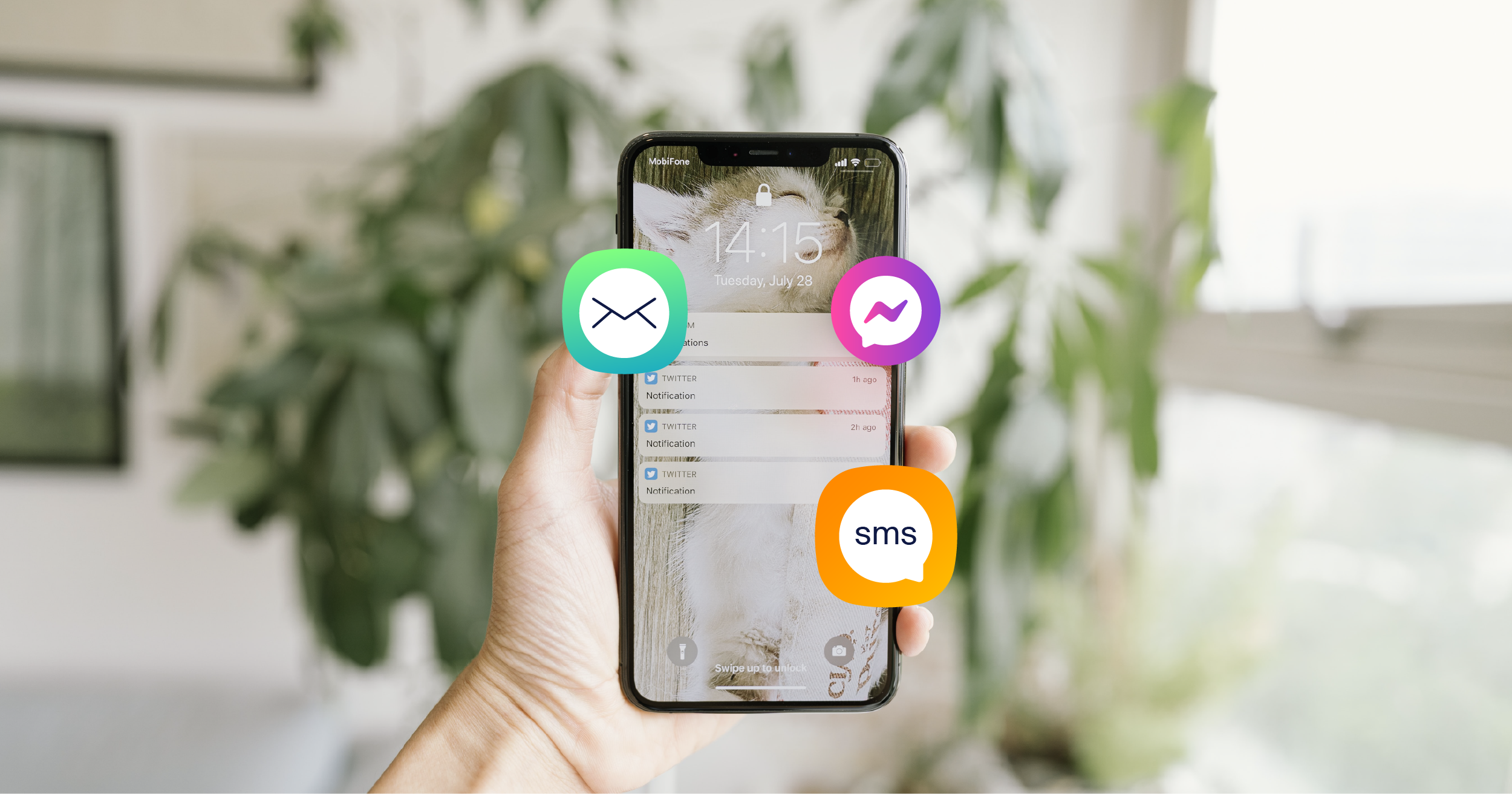Top Tips to Use SMS in Omnichannel Marketing
Published: Nov 25, 2020
Updated: Nov 10, 2022

There’s a growing trend around creating omnichannel and multichannel marketing campaigns to enhance the customer experience and build brand awareness. Integrating various channels, omnichannel marketing aims to create consistency when it comes to the brand experience.
The secret to an effective omnichannel strategy is using the right channels. However, one channel that many companies overlook is SMS. While there’s a misconception that consumer insight has outgrown SMS messaging, the numbers say otherwise. SMS messages have a 98% open rate, which is dramatically higher than email open rates.
The importance of SMS in an omnichannel marketing strategy is undeniable. If you’re looking to tap into the power of SMS marketing, follow these tips to integrate it into your omnichannel campaign.
1. Send SMS From a Desktop
While it’s possible to get work done on a smartphone, it can sometimes be strenuous. For instance, sending an SMS manually from your phone is not only time-consuming; it’s also unclever. Thankfully, you can now send SMS messages via desktop.
Today, apps like AirDroid, Join, and Pulse SMS allow you to send texts from a computer. You can also use Dexatel to send SMS messages from your computer.
2. Get Subscriber Permission
The key to better conversions is getting permission to send messages. This is why it helps to get subscriber buy-in by having them sign up for a service or getting their approval through an opt-in form. 75% of consumers say that they are comfortable receiving SMS messages from brands as long as they voluntarily register. When brands fail to get permission, their messages can often be perceived as spam and hurt brand image.
Get Started Now
Reach your clients now and claim your 30-day free trial. No credit card required.
3. Automate SMS Messaging
Marketers can now automate message sending on virtually any platform—email, social media, direct messaging, and even SMS. It’s super easy to find an omnichannel messaging platform that can help with automating mobile marketing.
Marketers have used SMS marketing tools to create alerts for sales and after-sales. Common examples include reminding customers of payment dues, new offers, sign-ups, loyalty points earned, and others.
Automation often has the disadvantage of sounding canned and impersonal. Since most people perceive SMS as personal and engaging, the strategy can work to your advantage as long as you formulate the message well enough to pass it off as personalized.
4. Mix It up With Emojis
One effective way to keep SMS blasts personal is by involving emojis. With over 3,000 emojis available to users, they’ve become a staple in communication. Emojis provide visual spaces that help break up long chunks of text.
When sending relatively long SMS text messages, it helps to use emojis to relax the reader’s eyes. Emojis like checkmarks and thumbtacks help create bullet points and break up enumerations in your messages. Define which emojis best represent your brand and use them when sending messages to customers and potential leads.
5. Make Use of Virtual Coupons and Vouchers
Price is an underlying factor that affects all marketing, selling, and buying decisions. So, when running an omnichannel marketing campaign, business owners, marketers, and executives must be creative in how they market their products.
Discounts and coupons are highly effective ways to entice a purchase. Almost every player in any industry has used some form of voucher or discount, whether it’s a sticker program to pick up your Starbucks planner or a one-off coupon at your local H&M or Zara branch. Nowadays, large corporations have switched to online coupons to drive purchases.
What’s great about technology today is that smaller businesses can now run loyalty programs and coupons of their own. Online selling platforms like Shopify and WooCommerce have built-in coupon generators that can be used to promote products. And what better way to get the word out than SMS marketing? Informing existing clients or leads who have gone back and forth on buying decisions can be the key to helping them make that decision.
6. Target Recipients by Location
Cell broadcasting is another invention that marketers are actively using. This marketing method sends text messages to a group of people based on their proximity and location.
Let’s say someone with a Spotify account on their smartphone walks within five hundred meters of an event venue. Marketers can set up cell broadcasting messages to send a list of upcoming concerts in that area to that person. This messaging strategy provides an intuitive experience with the proper context, making it highly permissive and relatable.
Brands can use SMS broadcasts to send limited-time offers, coupons, event schedules, reminders, trivia, invitations to like or follow social accounts, and so on.
7. Notify About Specials and Events
When a company or business holds an event, the goal is to get attendees to register or sign up. Most would rely on social media posts, but business owners end up leaving money on the table by limiting their reach.
SMS marketing doesn’t need to be limited to products and services alone; you can also use it to market specials and events. With higher open rates, businesses can easily get more attendees or walk-ins through SMS.
8. Keep Your Options Open
When creating omnichannel retailing or marketing campaigns, it’s always important to keep options open when selecting channels. As marketing technology and innovations regularly evolve, marketers and entrepreneurs need to keep an ear to the ground at all times, looking out for the next big marketing channel. Nevertheless, there is also power in remaining open to tested and proven channels like SMS to boost your brand awareness and business sales.
